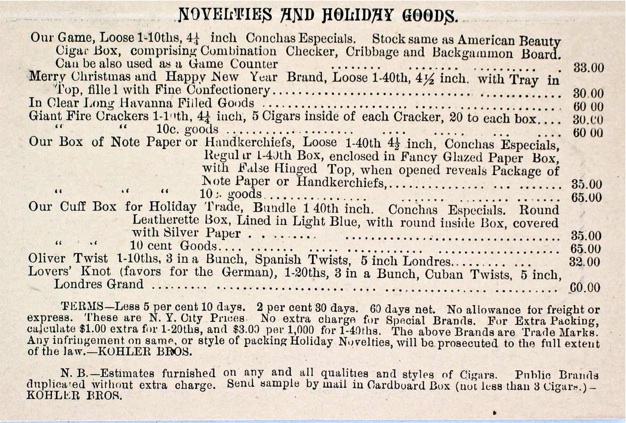Novelty Box Sampler
A National Cigar History Museum Exclusive
© Tony Hyman
Latest addition: January 17, 2011

Novelty Box Sampler
A National Cigar History Museum Exclusive
© Tony Hyman
Latest addition: January 17, 2011
When the tax law of 1878 first permitted boxes other than wooden rectangles, a wave of oddly shaped containers hit the market within days. Since then, thousands of cigar sellers have used cleverly designed boxes and uprights to lure smokers into buying the entire box. Book shaped boxes and log cabins were particularly popular and are expanded upon in other Exhibits. All cigar boxes, of course, can be used to hold things, but true “reusables” were specifically designed for some useful purpose once the cigars were gone. Game boxes and mugs are two popular “reusables” also subject of their own exhibits. The greatest variety of novelty boxes date from the 1870’s and early 1880’s so this Exhibit begins with a few of these amazing 130 year old creations.
Novelty packaging underwent two “revivals,” the first around 1900 to 1910 when book boxes by the score hit the market, the second during the great depression. The 1930’s reusables are best known for cedar log cabins and hundreds of different “lady vanity” boxes in wood and metal designed to be re-used by the “her of the house,” not the him.
I selected the items in this EXHIBIT to whet your appetite to visit other exhibits. The Cuban cigar industry, for example, was famous for exotic packaging, so you are encouraged to visit the exhibit of Cuban chests as well. Since many novelties were designed as Christmas gifts, you’ll also want to visit the Christmas exhibit.
After 60 years collecting, I still turn up new novelties.
strength testing machine (with built-in cigar cutter) patented by G.B. Fowler in June of 1886. Anything to sell a cigar. There’s no indication that cigars were given as prizes. If they were, every strong guy would be getting free cigars and the word would spread quickly. The three items pictured were obtained over a span of 20+ years. I’ve seen one other box, no other machines. Cigars were made for The Farrington Cigar Company by Edward A. Lambert who employed 60 rollers in Fact. 99, 3rd NYC, located at 343 East 73rd Street in the late 1880’s.
[4385] [4386] [4388]
[UR] HOLIDAY GREETINGS by A.E. John (Fact 155, 4th Iowa) Fort Madison, c1904. Same wood with
simulated weave but a different finish and different corner and top-center hardware. [4147]
[LL] TIMM’S MONOGRAM Christmas BN 25/8-9-8 (Fact. 931 Minnesota), c1904. [4146]
[LR] REMEMBER ME Christmas BN covered in brocade-like paper for cigarmaker Ralph H. Davis
(Fact. 171, 4th Dist. Iowa) Moulton, IA, c1904. [4153]
At least a dozen different types of stamped simulated weaves and other patterns are found on turn-of-the-century boxes, usually with decorative hardware, which seems to be available in almost endless variety. These fancy boxes were particularly common at Christmas after 1900.
Unusual reusable complete with thermometer and 1887 calendar. Cigars were made by Frank Pchaski in 1886 in his two man factory located at 708 5th Avenue in NYC (Fact. 552, 3rd NY). Two others of these are known, with different year calendars but all marked “Fidelity Trust Safety” suggesting they were a give-away by a bank or insurance company for at least three years.
[3381]
[3417]
[2553] [2554]
[4351] [4350]
Another Foster, Hilson & Co. novelty box, this one patented in Oct of 1877 and used in early 1879. The brand name was on an applied sticker so other brands could be packed in the same 100 box. The strap is leather. The tax stamp is applied on the ends and bottom so as not to interfere with the package design. Foster, Hilson was Factory 1, 3rd Dist. New York City located at 39th Street and 1st Avenue. [3429]
Christmas special made by Straiton & Storm in giant (1,000 rollers) Factory 11,
3rd Dist. NYC located at 204-208 E. 27th.
Cut-out fretwork like this is rare.
Straiton & Storm was one of the nation’s largest cigar companies, operating four NYC factories. Best known for creating Robt. Burns and Owl brand cigars, S&S ultimately became General Cigar. An exhibit of S&S brands is planned. [4327]
These lovely laminates and inlays were all used between 1878 and 1884 by Towne, Fuller & Co., (Factory 27, 10th Mass.) who employed 150 rollers in Springfield. Other varieties of these have been found as well, but nothing after 1885, making me curious as to why. No box maker identification on any of them.
[2508] [2514]
[2503]
A brand of cigars made for the man whose friends bum too many smokes. The inset mirror makes the mooch the 3rd Jackass.
Box patented in 1878. Cigars made in 1883 in Factory 303, 3rd District of New York City, a factory that had shut down by 1886 so no info is available. A curator’s favorite.
[9878]
A strange double sided novelty box of 100 which opens as if it were two boxes of 50. Perhaps the goal was to keep the cigars visible as quantities got low. Cigars were made by Hall Blair, a 25 man factory located at 187 Fulton St. in Brooklyn and packed in 1880 for Twitchell, Champlin & Co., a large New England wholesaler. This was the era of Barnum’s Jumbo when elephants were on everyone’s mind. Two patents are listed on the box, one in April, 1877, the other in January 1879.
[3459]
Foster, Hilson & Co. packed this novel 100/13 in 1881. This huge company employed 700 rollers in their factory at 39th St. and 1st Ave. in New York City. Retailers must have hated how difficult it was to stack with its curved cardboard top.
[3440]
box is damaged, missing the panel which originally covered the two spaces in front. I learned of this brand in 1960 and looked for one for 46 years before finding this, so was willing to buy a broken one.
[9874] [9876]
J. Holzman, who used other oddly shaped boxes as well. The top of the bottle was originally foiled and wired like a champagne bottle. The collar is turned, an integral part of the bottle, not inserted.
[2885] [2886]
Patented in June of 1878, this box shaped like a rueda media (half wheel) of 50 cigars was used in 1879 by Sutro & Newmark, one of New York City’s largest factories with more than 1,000 rollers at 73rd St. and 2nd Ave. This rare box was a special order item packed for retailer Thomas L. Benham, located at 723 3rd Ave. The small die-cut on the front is original. Brand name? THE LATEST.
Boxes in which cigars stand on end are called uprights, many of which are novelties, and subject of their own exhibit. Click at the top of the page to visit.
[2878]
THE IMMENSE CIGAR brand
Sandy’s card not in the NCM collection
[3444]
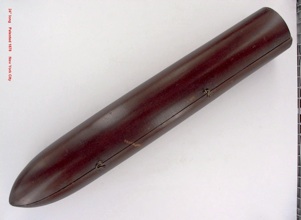
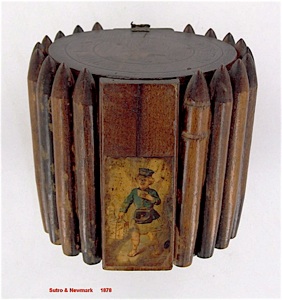
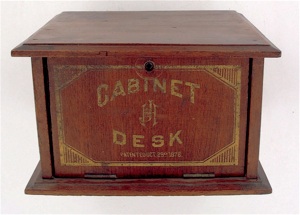
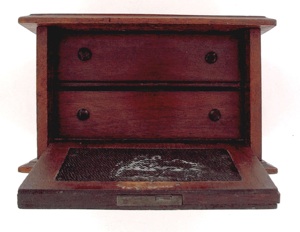
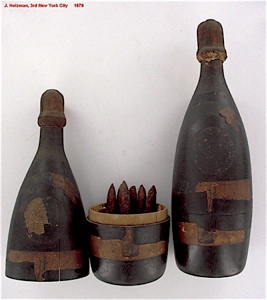
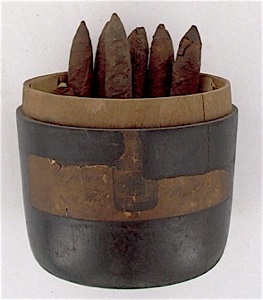
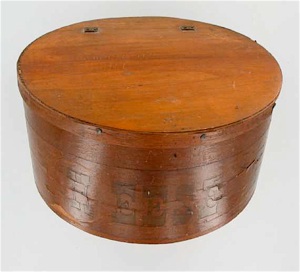
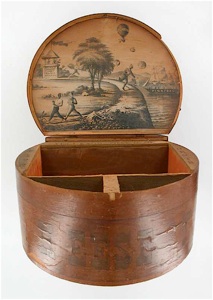
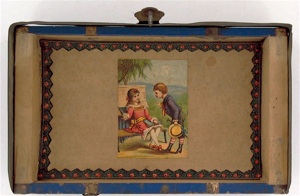
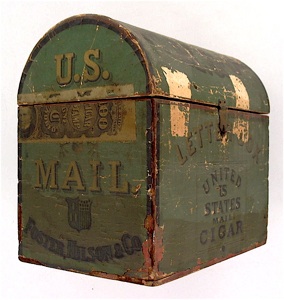
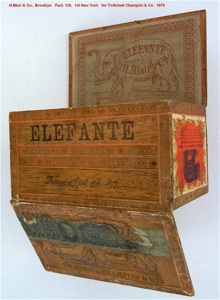
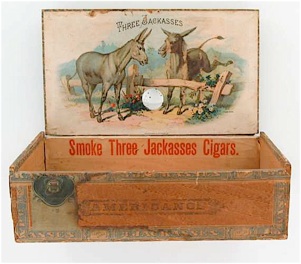
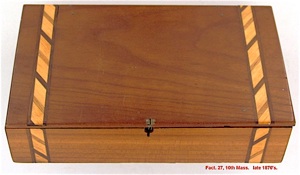
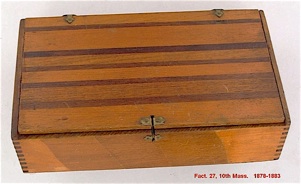
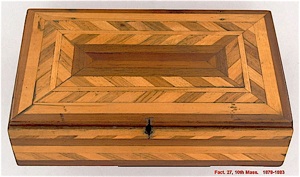
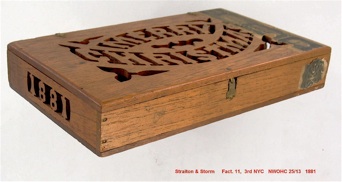
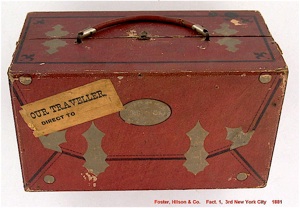
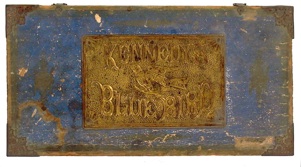
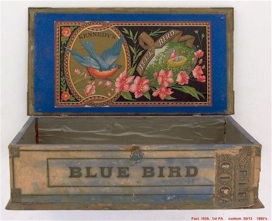
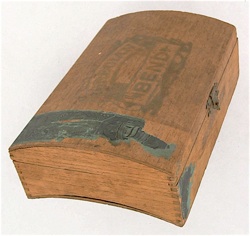
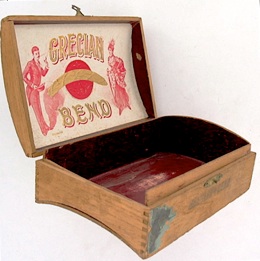
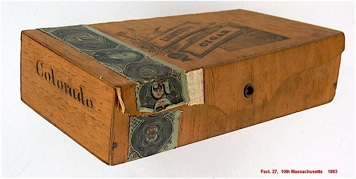
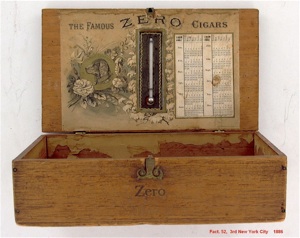
TO THE TRADE
“It is a well known fact that a cigar box after use has no value, still it costs money, which is added to the expense of producing the goods and is paid for by the consumer.
The Letter-File Cigar Box was designed especially to prevent this loss, as after the cigars are used, the file is useful for Letters, Bills, Receipts, etc.”
Created around the turn of the century, the Columbus File Cigar’s box is the ultimate in reusability. Cigars were made in Columbus, OH, Factory 105, 11th Dist. Ohio by the Wing Cigar Co. and sold, like most cigars packed in boxes of 250, for 3 for 5¢. In addition to the sales brochure the NCM collection includes a box-salesman’s blank unlabeled example of this rare box.
[3300] [3398]
[3399]
NOTICE TO THE CONSUMER! This Beautiful Tin Box when empty will be given to the Purchaser of the last package of CIGARS. It makes a very desirable Box to use as a CASH BOX, LUNCH BOX, CAKE BOX or for FISHING TACKLE, VALUABLE PAPERS, Etc. Watch the Box and buy the last Package.
Another classic example of a reusable, though this 13” long box is flimsy and of relatively limited use despite the seller’s hype. Title and package owned by Tinkham Bros, Cigar makers and distributors in Jamestown, NY, but the cigars were made in Factory 2353 in the 9th Dist. PA around 1905. Novelty boxes of 250 are rare. Many other variations of smaller, more practical, reusable tin boxes can be seen in the NCM exhibit of Tin Boxes after 1900. Click here.
Log cabins were a popular novelty, but most were more realistic than this printed box with logs extended past the corners. B.R. Hahn of Bay City, Michigan, a member of the Izaac Walton League, intended this patented box to be reused as a bird house when emptied by cutting an opening in one end. Cigars made in the late 1920’s in Fact. 693, 1st tax district of Michigan. To see more typical cabin boxes, click here.
[3458]
Novelty boxes are frequently shaped like other objects. The Cuban cigar industry has long been famous for its carved and inlaid boxes. This distinctive limited edition cigar box carved like a tobacco bale was used by Por Larrañaga just after the turn of the 19th-20th century. Measures 7” x 7.5” x 4.5” and has a relatively plain Larrañaga paper label inside.
[9158]
Visit the exhibit of Cuban chests, cabinets and novelties by clicking here.
Celluloid humidors turn up with some regularity but in 55 years I’ve only seen two cigar boxes made from the distinctive material, and none prettier than this bright red one used by Mugge & Treckmann, 105 Liberty St. in Brooklyn (Fact. 1163, 1st Dist. New York) c1900. [3407] [3408]
[4158] [4160]
[9804] [9805] [2809] [2834] [2866]
Indisputable proof that Americans, Cubans and Canadians aren’t the only clever cigar packagers.
[3437] [3436]
reportedly given away in the 1940’s to purchasers
of high-end Emerson radios or televisions. True?
¿Quien Sabe? But a very nice box called a Baromidor issued patent 1874889.
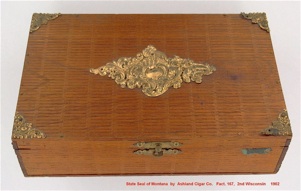
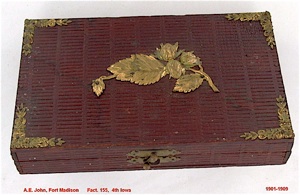
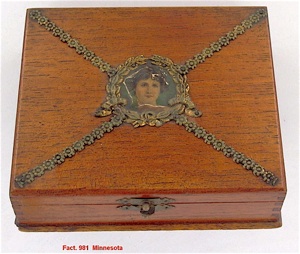
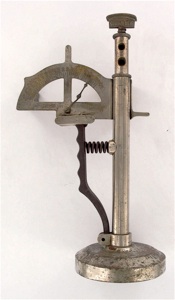
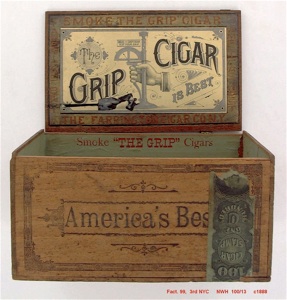
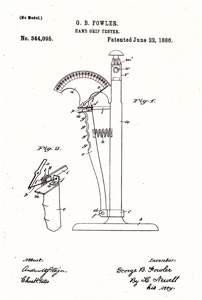
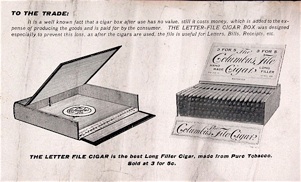
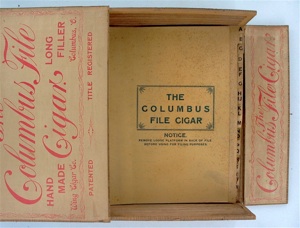
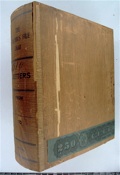
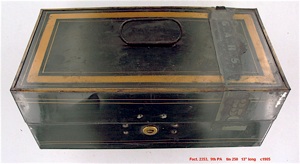
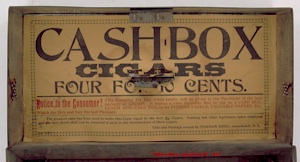
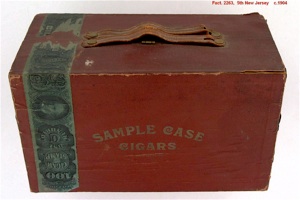
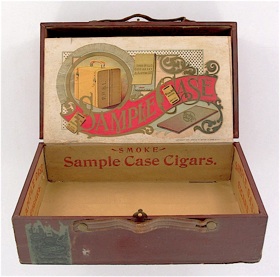

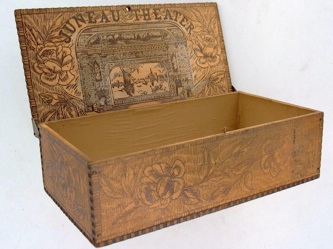
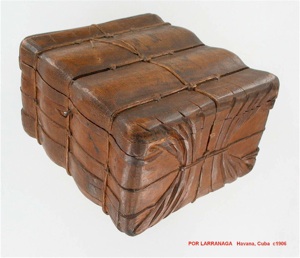
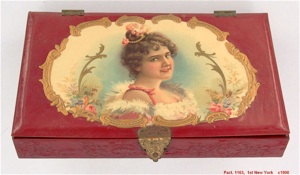
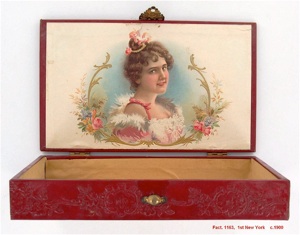
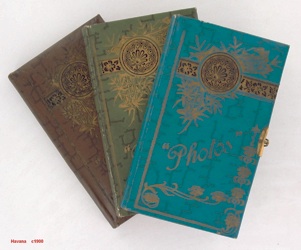
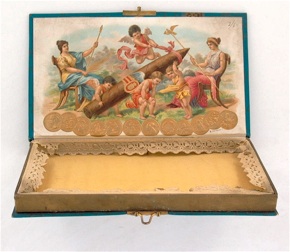
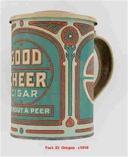
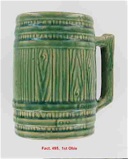
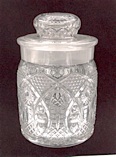
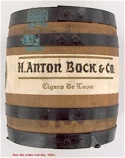
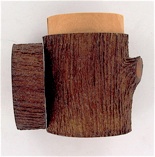
Nothing novel about the NW50/13 box but the canvas covered outer shell is more than a little unusual...and unnecessary? The cost to benefit ratio is questionable.
Cigars by E. Kleiner & Co., Fact. 1498. 3rd New York City, 1917.
[3414] [3604]
[3416]

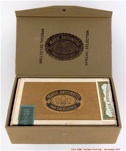
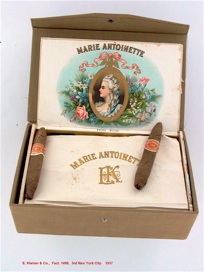
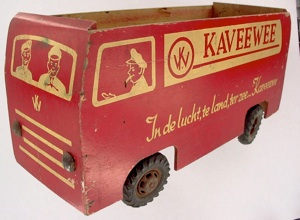
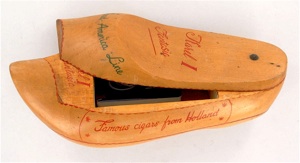
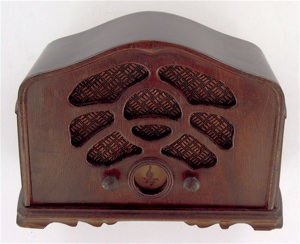
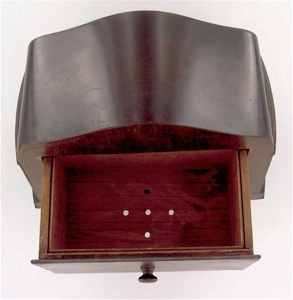
Modern novelty packaging
The novelty spirit lives on. WHITE OWL Rangers were packed in this interesting plastic cigar box. I’m looking for a magazine ad picturing it. The NCM has the duck but
not the original package seen here.
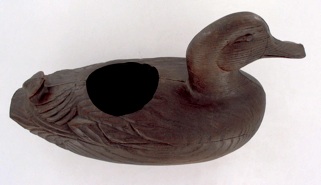
Jumbos
Jumbos were usually cellophaned, with the bands providing possibilities of a custom touch. Jumbos are commonly sold as souvenirs of places or events, including political conventions, national parks, and the like. The most common jumbo brand is COVERED WAGON.
[4436]
To visit the Jumbo exhibit, click <here>.
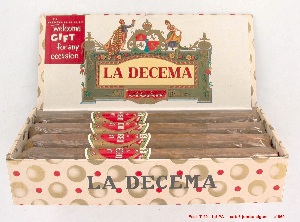
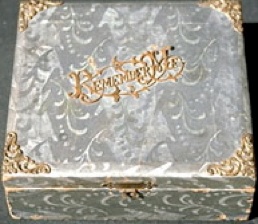
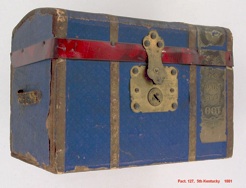
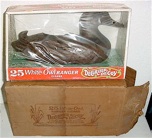
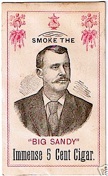
The spirit of innovative packaging didn’t fade into history when the modern era began evidences by this clever modern novelty made to look like a military ammunition case. Wording like “factory loaded” “caliber” and “Revolution” carry on the theme.
High prices of modern cigars give companies better profit margins, thus permitting expensive and often innovative boxes.
[11961]
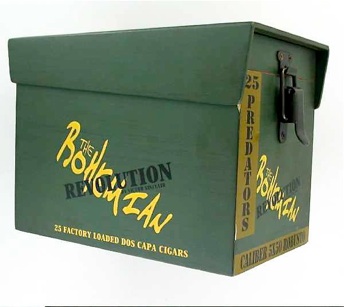
An 1881 Catalog Excerpt
The catalog excerpt (below) was copied from a small 1881 4-pager put out by one of Brooklyn’s 600 factories. With 10 rollers Kohler Bros. at 372 Hudson Ave. was one of the borough’s 30 largest cigar manufacturers and one of the few with a published catalogs of any size. Ads listing or depicting novelty boxes are quite rare. If you own ANY novelty-type cigar container not seen in any of the Exhibits at the top of this page, please write me at <tony@CigarHistory.info>.
[3665]
